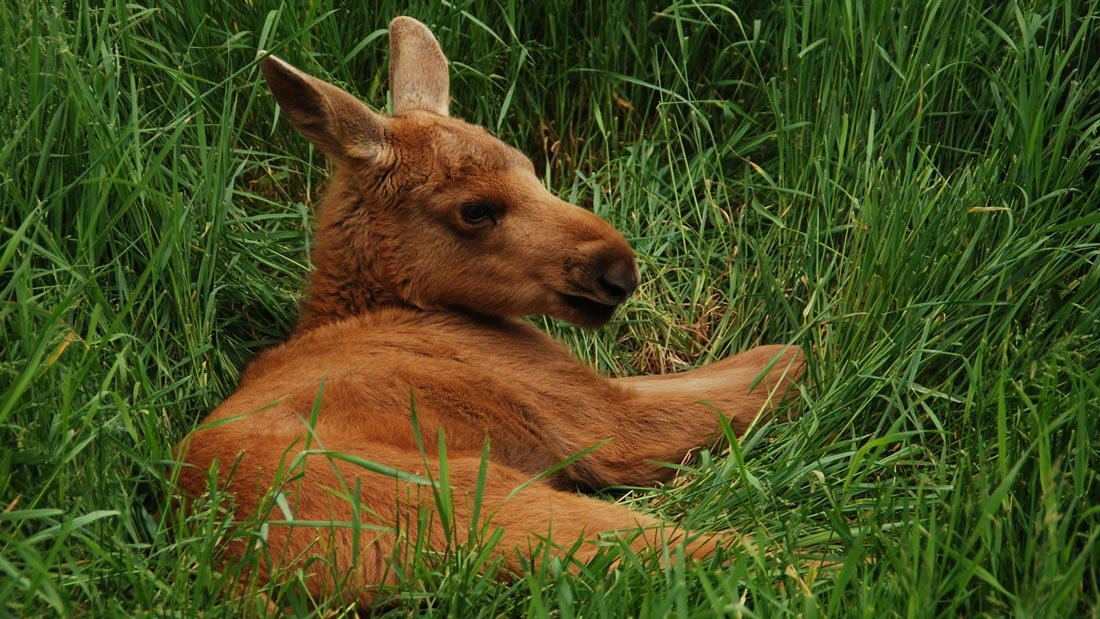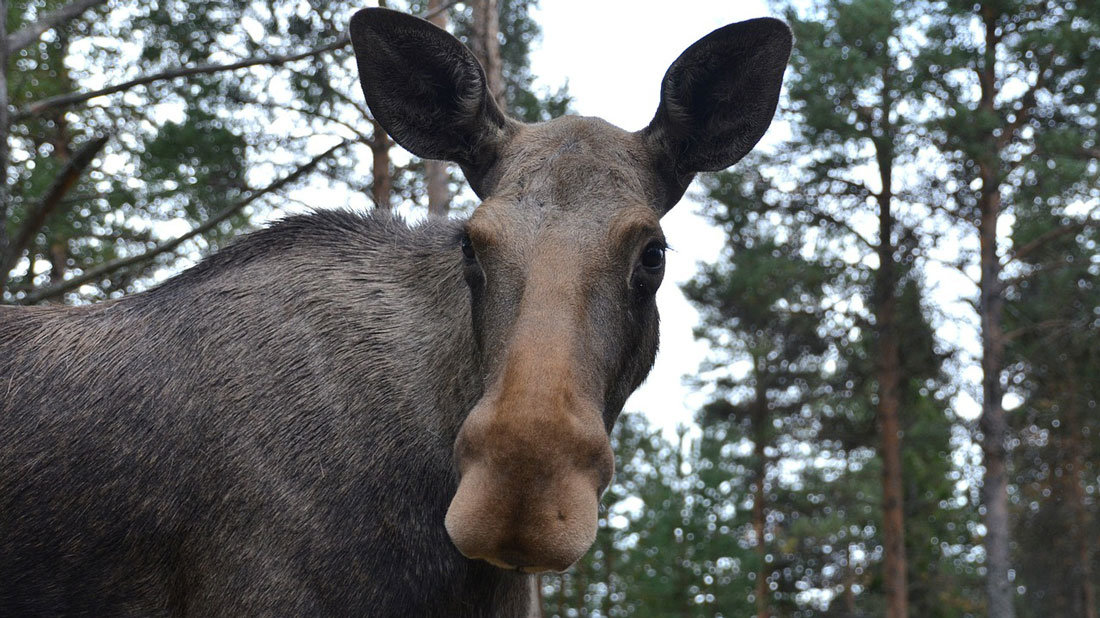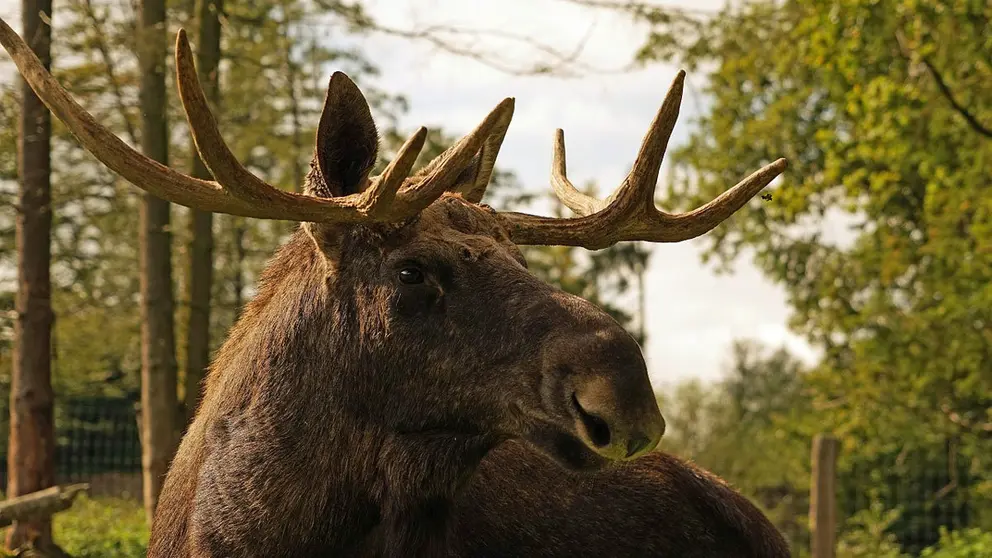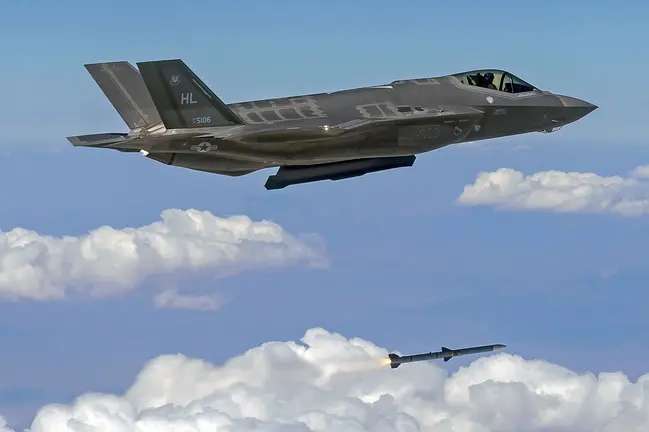Elks have always been part of the lives of Finns. The king of the Finnish forest came to the North among the first mammals about 9,000 years ago after the Ice Age and has been since then an important part of the country's economic and spiritual culture. It also causes around 1800 car accidents a year, some of them mortal.
The elk is the largest mammal in Finland and also the largest of all the deer species in Europe. Its body length may be up to 3 meters, heel height even 2,3 meters and males live weight up to 600 kg.
Only the males have horns. The purpose of the horns is to communicate to male rivals and interesting females of the male power of every individual. After the horny time, horns are dropped off and they grow back again the next spring.
According to an estimate by the Finnish Natural Resource Center (Luke), in 2019 there are about 86,500 elks in Finland. The highest densities (≥ 5 elks/1000 hectares) is on the southern and southwest coasts. In most parts of southern and western Finland, densities ranged from 3 to 4 elks/1000 hectares. In eastern and northern Finland, the densities were mainly below 3 elks/1000 hectares.
Forest damages and accidents
Even though elk is a majestic and respected animal, it also causes a lot of harm in Finland. Elks cause forest damages and, according to the Finnish Transport Infrastructure Agency, in 2017 were reported 1,824 collisions with elks. There were three fatalities resulting from accidents involving elks and 145 people were injured.
The most dangerous time for collision with moose are months from September to December, when it is elk's horny time and the time of autumn migration. 71% of all collisions occur between the evening and dawn, when elks are most active.
During the spring, the risk of collision with elks also increases. This is because many elks move to the summer pastures and also the year-old fawns run for the first time without their mother and may be disoriented.

How to avoid a collision
The most important thing is to drive according to speed limits. The risk of dying and being injured in a collision with an elk rises very sharply as the speed rises. The right speed gives you extra time to react and reduce potential injuries in a crash situation.
There are specific traffic signs in the areas where elks are more present. Drivers must be extra careful with the speed limits when crossing these areas.
Elks move from one place to another especially during the twilight in the mornings and evenings.
When you notice an elk, reduce the speed immediately. If you have to evade, try to dodge the elk from the backside. If you can, warn other drivers with emergency lights or flashing headlights.
The number of collisions with elks in Finland has decreased, and in the 2010s there have been just a few deaths per year. Efforts have been made to reduce accidents by clearing the roadsides, building circuses and underpasses, and with warning signs. Reduction of mortality has also been influenced by the decrease in the elk population, improved car safety and lower driving speeds. Elk fences have reduced accidents on several road sections.
Elk hunting
Elk hunting is a very popular hobby in Finland. Every autumn approximately 100,000 hunters participate in chasing the largest mammal of Finland.
The popularity of elk hunting can be explained by the excitement of catching a big wild animal, the sociability of group hunting and of course the meat. Every year more than 50,000 elks are hunted, almost half of them fawns.
The monetary value of the meat of the elks hunted is over ten million euros a year. The price of minced meet is around 17 euros per kilo and the fillets may cost over 35 euros per kilo. This meat is appreciated in Finland for being particularly tasty, very low-fat meat and also for being an ethical choice for carnivores.
Besides of the meat, also the fur, leather and horns of elks are used to make different kind of items and crafts.

A protected animal
Even though hunting is very popular in Finland, the ultimate purpose is to limit the elk population. Hunting is well regulated: it is obligatory to have an elk hunting license and hunting is permitted only in specific areas. Outside the hunting season, the elk is a protected animal in Finland.
Even though elk causes some harm, it has been for centuries a respected and admired animal in Finland. It was a standard theme in the ancient rock paintings of northern Europe, which shows its immense importance in the history of our continent and the lives of our ancestors.
While driving, we all hope not to see any. But for those who are interested in seeing the king of the forest alive, the best way is to find some remote field in the summer night, where elks may be enjoying the peace and their biggest delicacy, marsh trefoil.
The easiest way though is to go to Korkeasaari Zoo in Helsinki, where you can meet this summer the temporary guests of the Zoo: the mother elk and her daughter. But hurry up, because after the summer these two beauties are called to delight other people in some other European Zoo.













